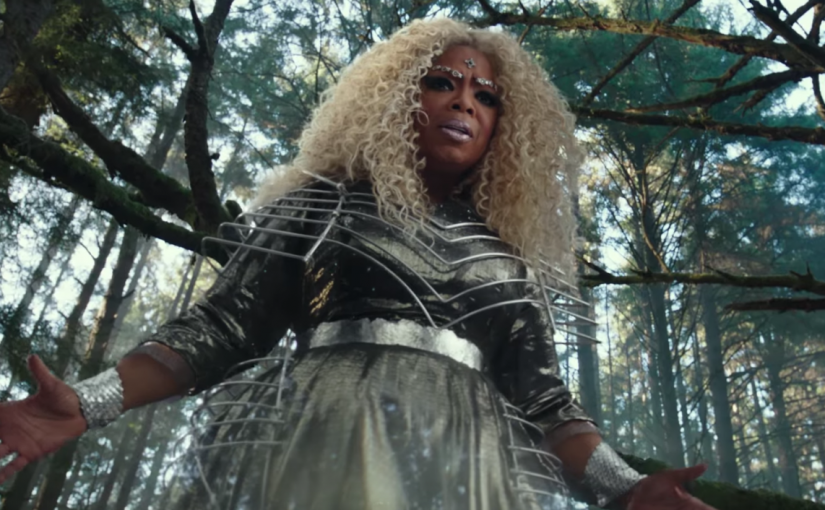Well, the first indicator that Disney’s A Wrinkle in Time may be going sour is that the protagonist, Meg, has an adopted little brother whose full first name is Charles Wallace.
But that’s one of the more minor flaws of the Ava DuVernay project. Besides, Charles Wallace (Deric McCabe) is the shining star of the fantastical film. He’s fearless and charming, and he has a very smart mouth.
In short, Meg and Charles Wallace’s dad, Mr. Murry, is a scientist who disappeared suddenly several years ago; everyone but his children thinks he’s dead. His work researching “tessering,” a form of space and time travel, was controversial, and when he and his wife, Mrs. Murry (Gugu Mbatha-Raw), presented this concept to NASA, everyone in the room laughed.
Yet Mr. Murry continues his work and gets lost in the universe, and now his two young children decide to travel the universe with the three witches (Mindy Kaling, Oprah Winfrey, and Reese Witherspoon) to find him. Meanwhile, there is a dark energy called “IT” that is constantly spreading.
Most of the characters aren’t colorful, apart from their outfits. Unfortunately, much of the talent the film employs is not put to good use. Mindy Kaling plays Mrs. Who, a bookworm who speaks only through quotes from other people. Given Kaling’s reputation as one of the better writers in Hollywood, it’s a shame none of that prowess was used for this role.
Rowan Blanchard’s screen time as head mean girl includes Meg hitting her in the face with a basketball for making fun of her (cliche) and stepping on the scale as she struggles with body dysmorphia (cliche). Oprah’s iconic status is amplified, as she’s about 10 times her normal size through most of the movie, but her grandeur is short-lived as the three witches leave the children to navigate the journey on their own (cliche).
There are also quite a few plot holes. Where did Calvin come from? He just pops up. The storyline of Meg being bullied falls through within the first fifteen minutes. There is a minimal and anticlimactic buildup to the reveal that their dad is, in fact, alive.
It’s worth mentioning that Charles Wallace is adopted. So when the “IT” (apparently of no relation to Stephen King’s It, but there are many parallels) consumes Charles Wallace and tries to take Meg, Mr. Murry shows a beautiful display of favoritism and decides they should sacrifice his only son to make it back home safely. It is not discussed further.
“I wanted to shake hands with the universe … when the hand I should’ve been holding was yours,” he tells Meg when the three of them make it back home. Charles Wallace gets no such sentiment.
In all this, Calvin is (un)noticeably absent after being left unconscious when “IT” tries to get him too, but is miraculously back at the Murrys’ house when they get there. When Charles Wallace is saved, Mr. Murry lovingly embraces him, never apologizing for leaving him to some evil and abstract black matter millions of light years away.
The saving grace, without a doubt, are the visuals. DuVernay has a keen eye, and the shots are thoughtful and imaginative, the costumes and makeup vivid and unique.
Ultimately, the film has a lot of potential, but hinders itself in its reliance on beauty, so that substance is perhaps unintentionally cast aside.



